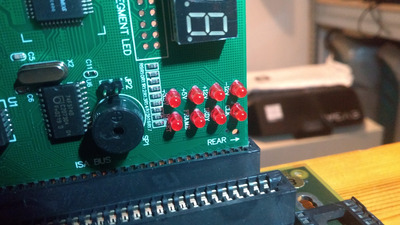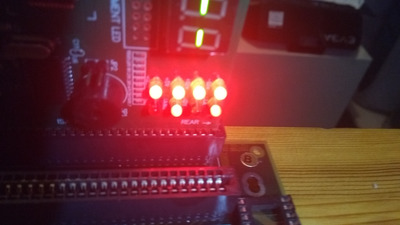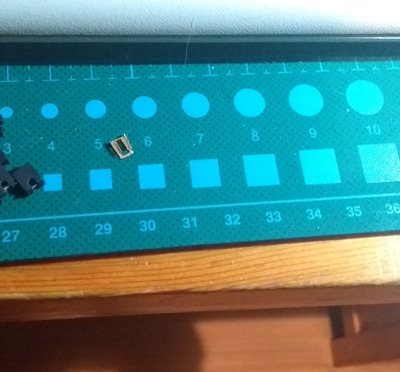Well, this is surprising and/or embarrassing. Still no successful POST but I did make some progress.
This week I found someone selling a Am486 DX2 66MHz (a 5V CPU) close by for a soft price and I just installed it. While I was re-arranging the CPU pin jumpers I noticed a glint of light. It appears that the metal of one of the jumpers was pulled out from it presumably when I adjusted the jumpers for the 5x86 CPU. And what do you know, something is happening now that I removed it.
The POST card now shows that the process stops when it's doing step "07" which, according to the manual, means that the CMOS is being validated and if the battery is bad. (the manual says that the previous code, "06", is "reserved" so who knows how accurate it is). I think this points to the Dallas battery (the code stays the same when I pull the Dallas out, but that doesn't have to mean anything)
I did replace the Dallas battery but there is no guarantee that the replacements that I bought are any good. It's also possible that I made a faulty joint when soldering on a socket to put them in. I will measure those legs first, and then probably order a modern, guaranteed firsthand battery, or go for the Dremel route and mutilate one of the Dallases to operate on a coin cell battery.
New video
(P.S. I didn't put in the 5x86 back in again because I'm not worried that it was the cause since I know the CPU itself works. And this would explain why the POST card behaved the same before when I booted the system without the CPU.)
Edit: As far as I can tell, all the pins on the Dallas socket are making contact. I exposed the internal contacts of one of my Dallases and it measured at 3.3V. I was expecting max. 3V, but I guess it's okay
Edit II: The Vcc to the Dallas is a clean 5V. I measured it because the datasheet says that the chip can't be read/written to if the voltage is below 4.5V
Am486 DX4 120MHz, no L2, 16MB, Tseng ET4000/W32 1MB VLB, ESS ES1869 /// 5x86 133MHz, 256kb L2, 64MB, S3 Virge/DX 4MB PCI, SB16 + Yucatan FX, PicoGUS /// Pentium III 1GHz, 512MB, Asus V7700 64MB AGP, SB Live!


